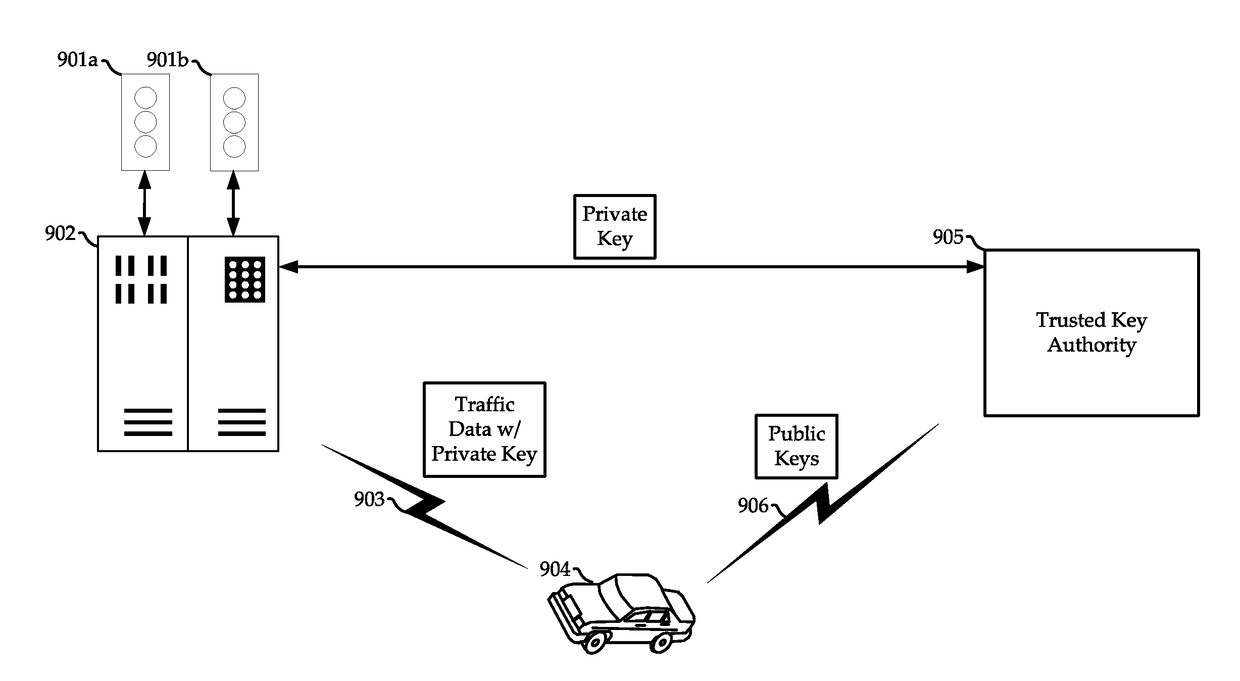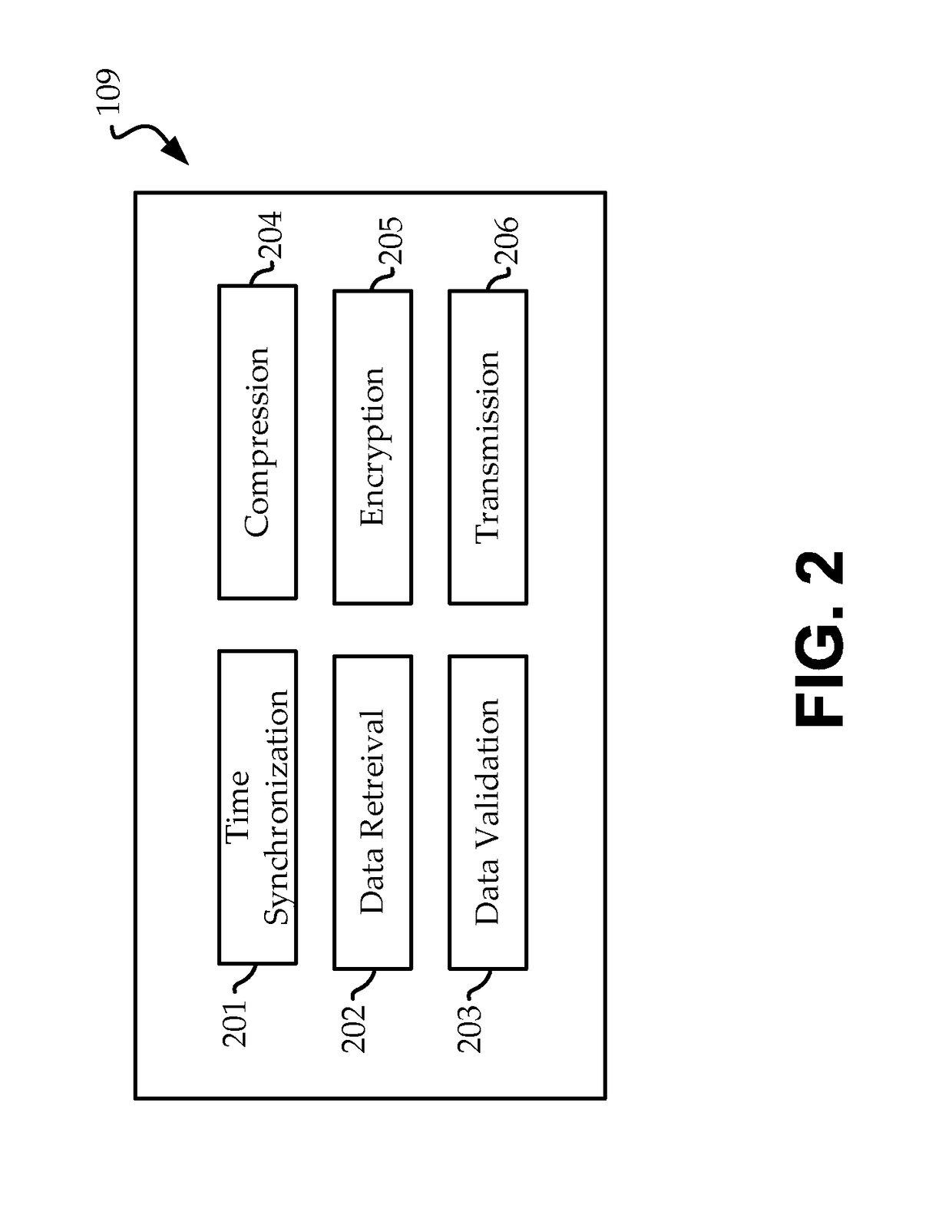Infrastructure to vehicle communication protocol
a technology of infrastructure and communication protocol, applied in the field of secure communication, can solve the problems of localized disturbance of traffic flow, which may ripple throughout the system, and not all disruptions of traffic flow, so as to reduce congestion, avoid data loss or minimize, and improve travel times
- Summary
- Abstract
- Description
- Claims
- Application Information
AI Technical Summary
Benefits of technology
Problems solved by technology
Method used
Image
Examples
Embodiment Construction
[0055]FIG. 1 illustrates a system 100 operable to collect and transmit traffic data to a remote location. In the illustrated system 100, traffic signal information is obtained by a network of traffic hardware devices 101-103. Traffic hardware devices may be, for example, a traffic controller, traffic camera, intersection controller, inductive loop detector, microwave detector, magnetometer, traffic radar, thermal sensor, conflict monitor, general hardware I / O, road weather information system, battery backup system, etc. The traffic hardware devices 101-103 may be disposed within, on, under, adjacent, above, or otherwise relative to a roadway. Traffic hardware devices may be stored, for example, within a traffic control cabinet or upon a support mast. The traffic hardware devices may provide raw or preprocessed data to an LDCM 105. The LDCM 105 may be embodied as a single device or may be distributed across multiple devices in operative communication with one another. The traffic har...
PUM
 Login to View More
Login to View More Abstract
Description
Claims
Application Information
 Login to View More
Login to View More - R&D
- Intellectual Property
- Life Sciences
- Materials
- Tech Scout
- Unparalleled Data Quality
- Higher Quality Content
- 60% Fewer Hallucinations
Browse by: Latest US Patents, China's latest patents, Technical Efficacy Thesaurus, Application Domain, Technology Topic, Popular Technical Reports.
© 2025 PatSnap. All rights reserved.Legal|Privacy policy|Modern Slavery Act Transparency Statement|Sitemap|About US| Contact US: help@patsnap.com



